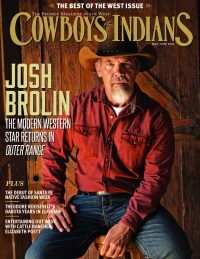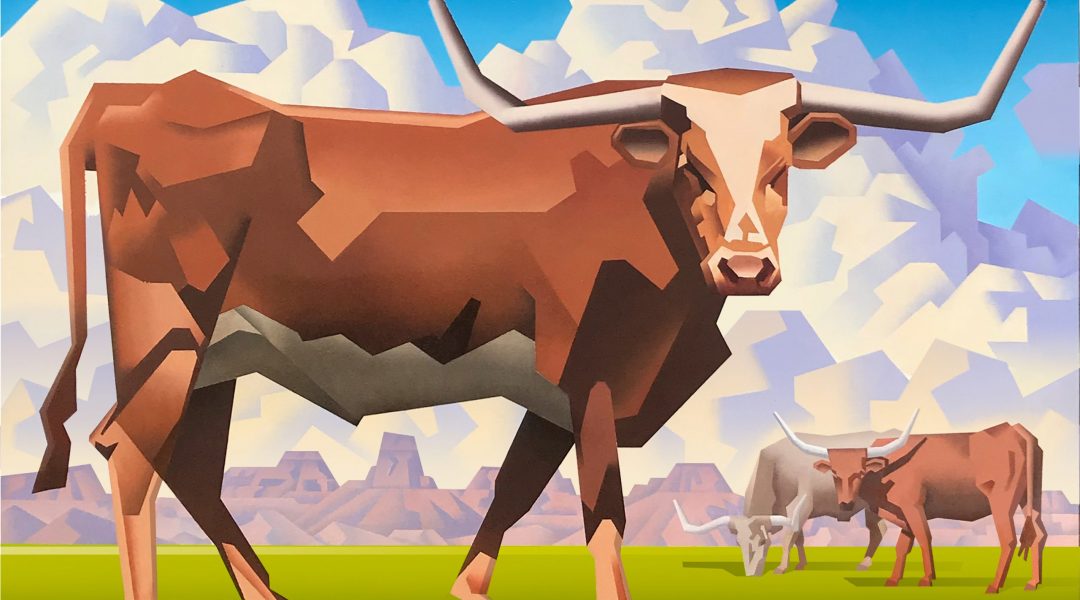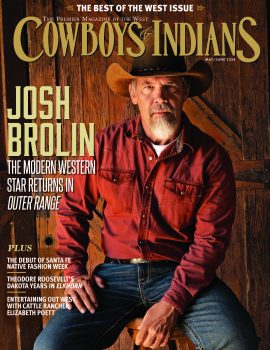Born in Presque Isle, Maine, painter David Jonason moved west at the age of 5 and soon discovered his artistic future.
On family rock-hunting trips to the Mojave and Anza-Borrego deserts, he became enthralled with the dramatic landscapes of his new Southern California home. It was during this formative time that he distinguished himself as a budding artist in kindergarten with a precocious and detailed crayon self-portrait. “I got accolades from parents and teachers alike,” Jonason says. “From then on, I was hooked and never really considered doing anything else.”
And he hasn’t, apart from sometimes playing guitar in a country band (“classic stuff like Hank Williams, Johnny Cash, Merle Haggard, Willie”), an experience that gives him an apt metaphor for what he’s hoping to convey with his visual art: “Occasionally, when the band is sounding tight and people are dancing and having a good time, for a moment, I imagine that the audience is hearing the same thing I am,” he says. “I want the viewer of my art to feel the same passion as I do about a scene.” His hope is to use his cubist style to express the monumental volumes of the Southwest’s spectacular rock forms. “I want to show viewers these familiar sights in new and fresh ways. I aim to have even my most still and serene landscapes vibrate with primal energy.”
We talked with Jonason about his work on the eve of an exhibition of his paintings, Southwest Tempest, at McLarry Modern in Santa Fe.
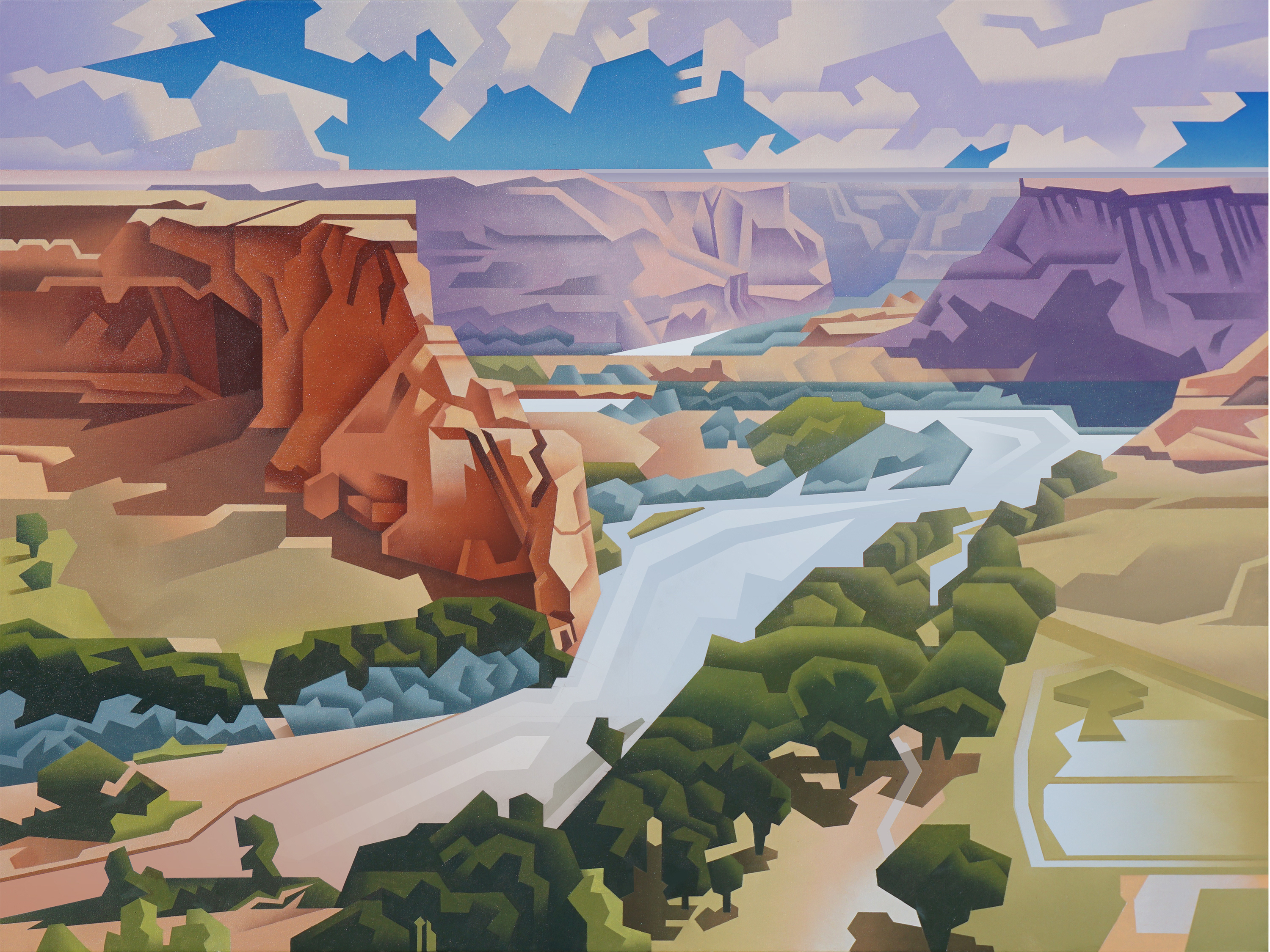
Cowboys & Indians: The Southwest is one of your favorite subjects. How and when did you get there?
David Jonason: In 1993, I quit my corporate job doing computer graphics at ABC News in Washington, D.C., and built an adobe house in Galisteo, New Mexico. I moved west with the dream of starting fresh and becoming a painter. Becoming a full-time painter took a bit longer than I imagined, but I always tend to be overly optimistic with new endeavors.
C&I: As much as you love the Southwest and as much as it informs your work, you live elsewhere now.
Jonason: Regrettably, I no longer live in Santa Fe. I married a West Coast woman and currently live in Northern California. It’s one of the weird things you do for love. That said, my wife is very good about letting me wander around the desert several times a year with my camera and sketch pad.
C&I: Your art shares an appreciation of simple lines and geometric shapes with Native American design. How do you see that commonality?
Jonason: My first career in art was doing textile designs for the home furnishings industry. I had a rep in New York that sold my designs for sheets, linens, upholstery, and wall coverings, etc. I’ve always had a deep appreciation for textile design and pattern in general. I try to incorporate the geometric patterns of Native American pottery, Pendleton blankets, and Navajo rugs into my work. It can be pretty subtle and something the casual viewer might not take in. Many times I’ll use the zigzag motifs from Mimbres pottery in my clouds and skies.
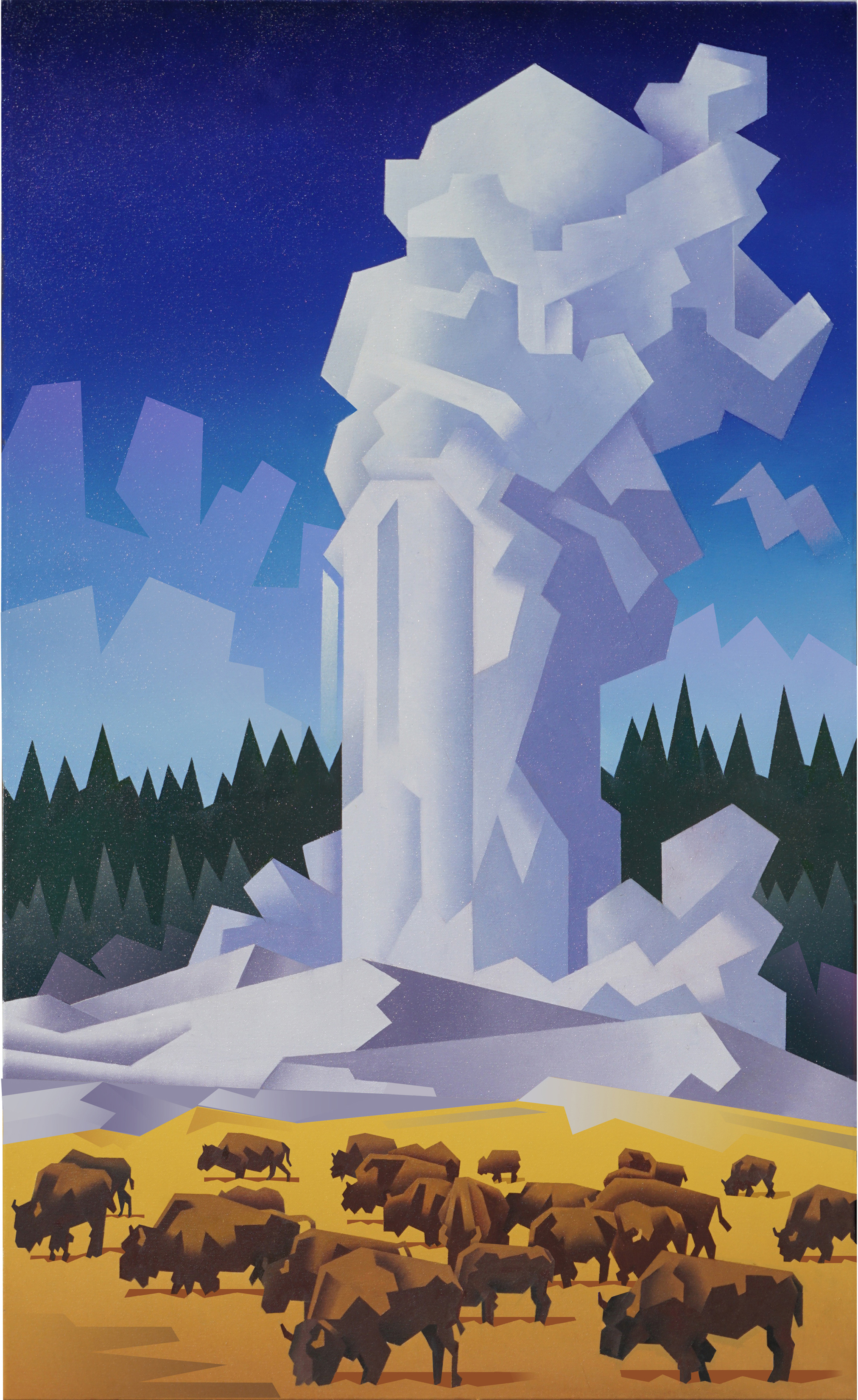
C&I: How do you proceed from what you actually see with your eyes to the distilled essentials you paint?
Jonason: When I’m sketching out a painting on the canvas, I try to reduce the shapes to simple volumes. When I start to apply paint, I continue to refine and simplify the shapes. I try to emphasize the broad contours of an object while minimizing surface detail and texture; this is really the fun part of creating a new work. Much of the rest is just busy work. I continue the process with each layer until the painting is complete. The result is that everything — including trees, foliage, and clouds — tends to look like rocks, but that’s part of my style.
C&I: What part does color play?
Jonason: Color always sets the mood, like minor or major keys in music. The colors I choose will depend on the emotion I am trying to convey about the landscape. I may use more reds and earth tones for passionate intensity or blues for peaceful serenity. In any kind of art form — be it poetry, music, or painting — you are just trying to convey an emotion.
C&I: What artists inspire you?
Jonason: I’ve always been a big fan of the Taos Moderns like [Andrew] Dasburg, [Victor] Higgins, and [Emil] Bisttram. In addition, I have a great appreciation of Maynard Dixon, Ed Mell, and Tamara de Lempicka. These artists seem to be able to seamlessly combine the elements of cubism and realism — something I’m always shooting for in my own work.
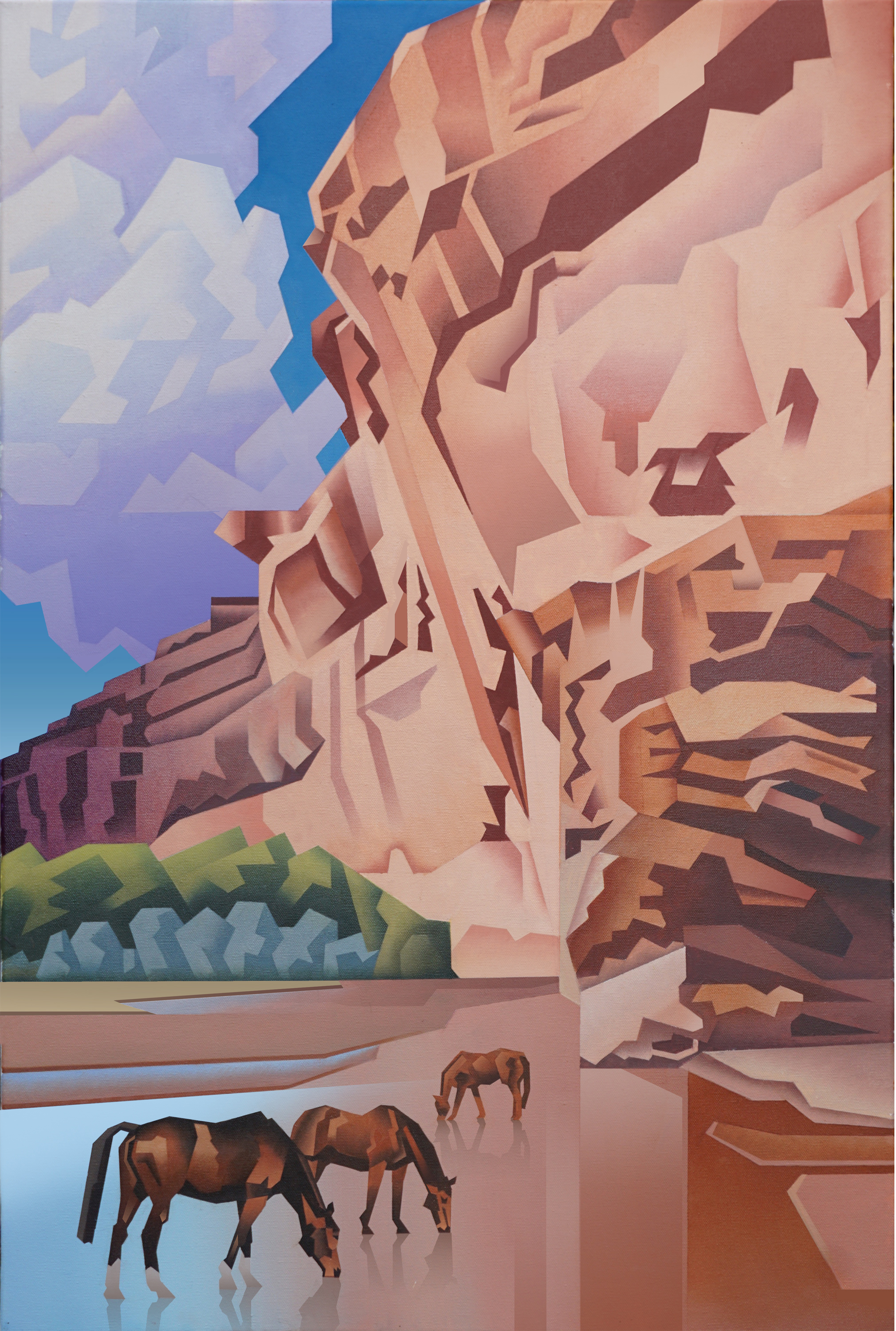
C&I: You’ve said all Western painters are children of Maynard Dixon. Imagine a road trip with him.
Jonason: I’d pack up my camper with firewood, beer, art supplies, and head up to northern Arizona. The first stop would be the Vermillion Cliffs and Marble Canyon. I probably wouldn’t get much painting done the first day since I’d be too busy watching him. I’d want to see where he set up his easel. How would he frame the composition? What would he include, what would he leave out? By day three or four, I’d be less star-struck and get down to my own work. At night, over beers by the campfire, we’d talk about painting, love, and world history. Next stop would be Canyon de Chelly, then Monument Valley, finishing off in Arches National Park in Utah. Hopefully we wouldn’t be too sick of each other and would plan another road trip.
C&I: What keeps you living in and painting the West?
Jonason: For me the American West has always been as much a symbol of freedom as the Statue of Liberty. The notion that you can go west and reinvent yourself is the story of who we are as Americans and part of our mythology. It’s still embedded in our culture today even though the West of the 19th century no longer exists.
From the May/June 2018 issue. David Jonason is represented by McLarry Modern in Santa Fe; Big Horn Galleries in Cody, Wyoming; The Marshall Gallery of Fine Art in Scottsdale, Arizona; and Mountain Trails Gallery in Jackson, Wyoming. Southwest Tempest is on view June 8 – 22 at McLarry Modern.
More Art Gallery
Z.Z. Wei: Shadow Stories
10,000 Years of Walking the West
Mike Stidham



